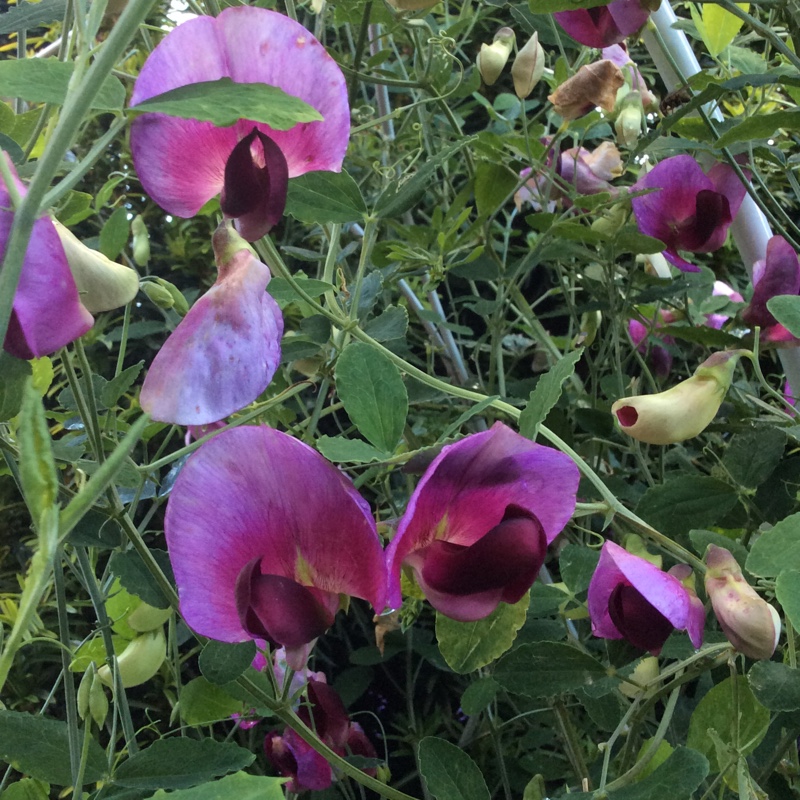
Lathyrus grandiflorus
Everlasting Pea
L. grandiflorus is an easily grown, robust, spreading perennial with a running rootstock. It flowers in early summer, but rarely produces seed. It can become invasive, particularly in light soils. Lathyrus grandiflorus normally has to bought as a plant. It can easily be propagated from its running rootstock.
Contributed by @harebell
-
Full sun to partial shade
-
Very little water
-
Full Frost Hardy: 5F (-15°C)
-
Light and free draining
Common name
Everlasting Pea
Latin name
Lathyrus grandiflorus
type
Perennial
family
Fabaceae
ph
5.0 - 7.5 Acid - Neutral
Plant & bloom calendar
-
Best time to plant
-
When to harvest
full grown dimensions
 0.80 M
0.80 M
0.80 M
0.80 M
Lathyrus grandiflorus
L. grandiflorus is an easily grown, robust, spreading perennial with a running rootstock. It flowers in early summer, but rarely produces seed. It can become invasive, particularly in light soils. Lathyrus grandiflorus normally has to bought as a plant. It can easily be propagated from its running rootstock.
Planting out
From Mid Spring TO Mid Spring
Plant out in mid-spring in full sun or in partial shade providing support for the plants to reach their maximum height. Against a wall or fence is ideal otherwise, it is at its best when allowed to sprawl down a bank. They need a light and well drained soil for best results.




















